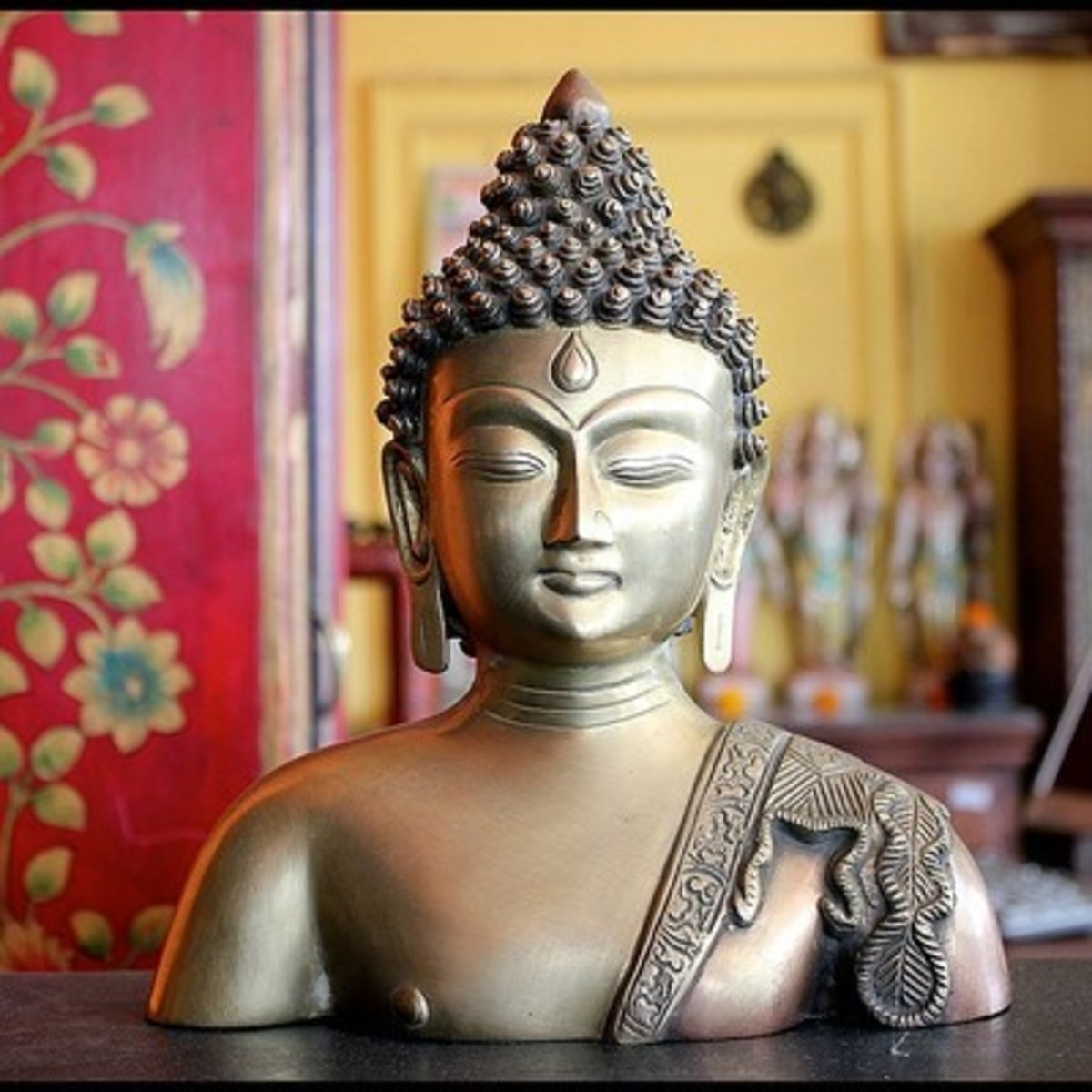- HubPages»
- Travel and Places»
- Visiting Asia»
- Southern Asia
A peep into the Glorious Past of Indian Architecture : KARLA CAVES
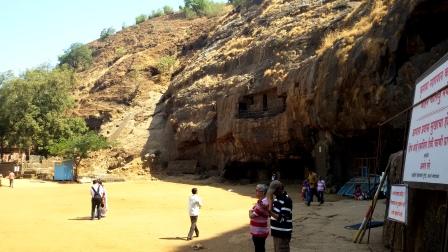
Karla Acves : An Introduction
More than 2000 years ago, the mountains of the western India were dotted with rock cut caves constructed by almost inhuman endeavor & skill of the devoted sculptors. These caves, used for worship as well as dwelling, were mostly Buddhist. These still inspire awe to anyone who visits these caves, many of which, though ravaged by the relentless onslaught of time, natural elements & destruction by man, are examples of the high level of Indian architecture & art at that ancient time.
One such group of caves is the KARLA caves situated in the Sahyadri Mountains very near the now popular hill station of Lonavala in the state of Maharashtra, India.
Geography
Karla caves are situated in Karli in Maval Taluka of Pune, very close to the MUMBAI-Pune highway. It is about 12 km from the now highly popular hill-station of Lonavala.
History
It is said History is nothing but the whispering of the Time. You should be attentive to listen what is being whispered by the Time. A small signal, a hidden symbol, a folklore -- everything can lead you to the real History. The same is with the history of Karla.
The cave shrines of Karla were constructed in between 2nd century BC to the 5th century AD. These were Buddhist shrines, & Buddhism was a strong force then. The fund necessary to build this huge complex came mainly from donations of merchants & common people, who were followers or admirers of Buddhism, though Royal patronage from the Maharathi dynasty was also there.
The Karla caves were related to both Heenayana & Mahayana sects of Buddhism.
Importance
Two notable things about the Karla caves are :
1) The huge Chaityagriha ((Shrine) in cave 8 is the largest of all Chaityagrihas in India.
2) Besides Kanheri caves, it is the second of the two rock cut caves in the southern India with a Lion Pillar built in the style known as Ashokan, as per the name of the famous emperor Ashoka who did a lot to popularize Buddhism in India & abroad.
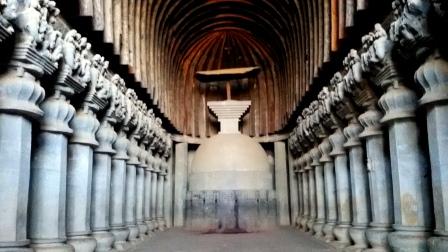
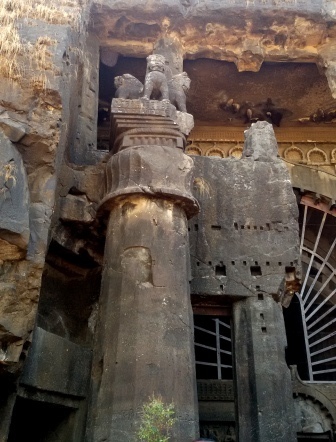
Karla : Architecture
The rock cut caves are of two types - Chaityagrihas (shrines) & Viharas (dwelling places of the monks & other inhabitants). In total 16 such structures are excavated at Karla, but most are in bad condition. Of the 16 excavations, 3 belong to the Mahayana sect & 9 to Heenayana.
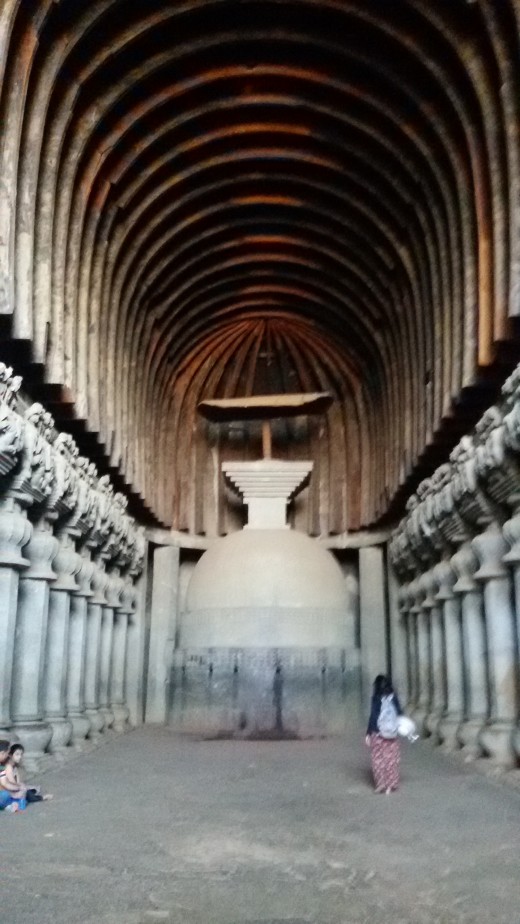
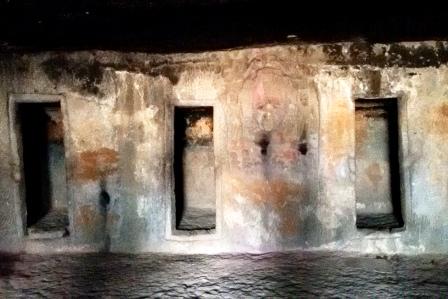
The Lion Pillar
In front of the main Chaityagriha there is a huge stone pillar with four lions at the top. Its position indicate that there was another one on the other side. However, that is missing now. This pillar is of the Ashokan type.
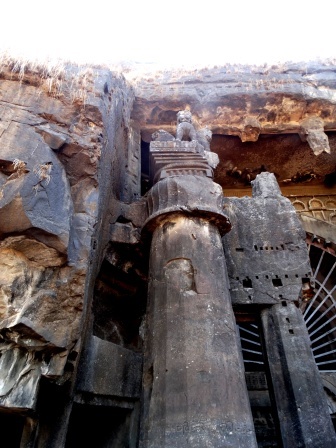
The Entrance to the Chaityagriha
The entrance to the Chaityagriha is through a veranda with three doors. The side
& front walls of this veranda are elaborately decorated with fine designs of Chaitya like structures, rows of elephants , images of Lord Buddha & six pairs of scantily clad human figures. Though there is no sign of sexual intercourse ( the male & female figures are standing side by side holding hands), these are often referred to as Mithuna Murti (Copulating figures).
There is a huge semicircular window on the upper portion of this veranda through which day-light enters the cave.
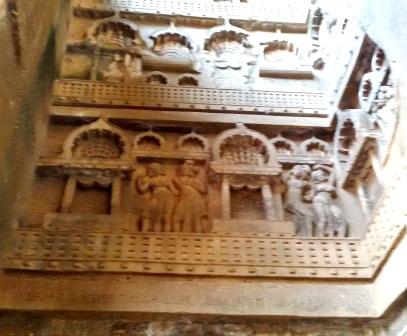
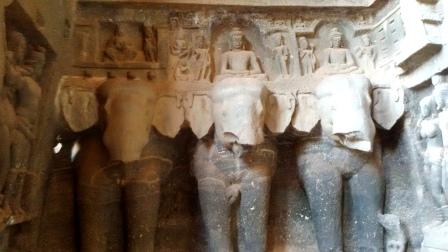
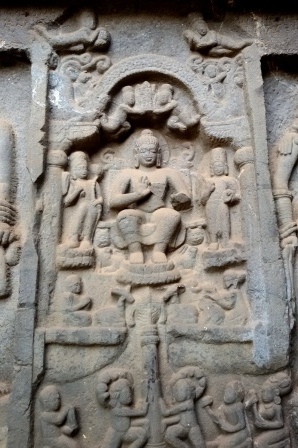
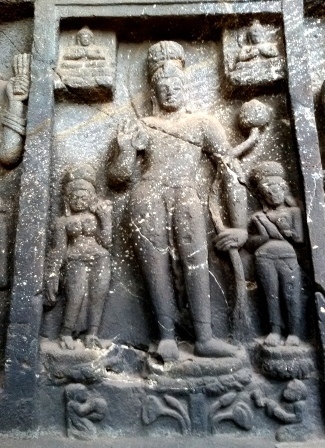
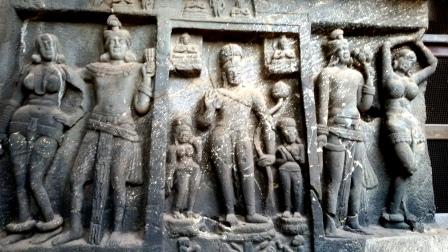
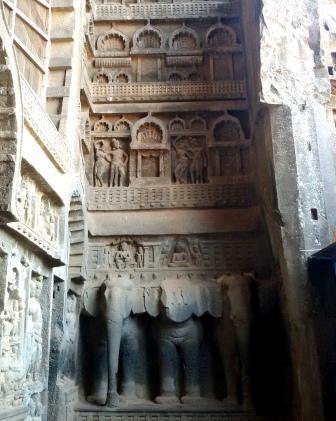
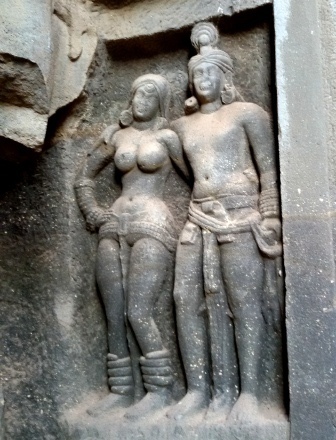
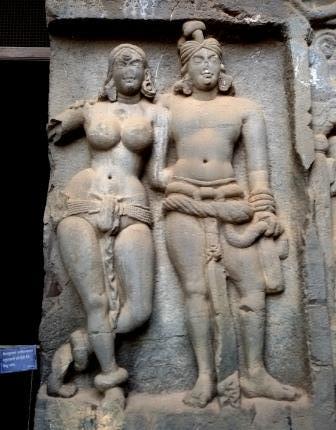
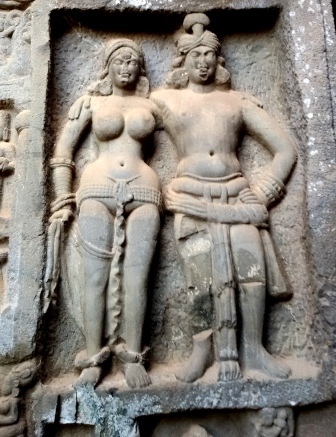
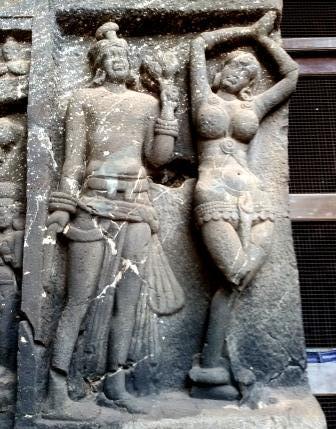
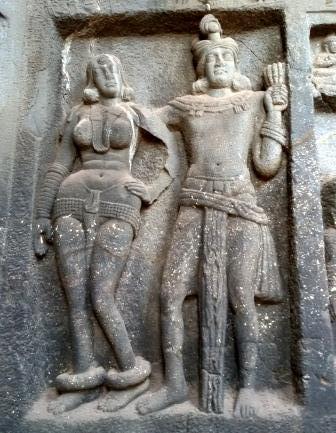
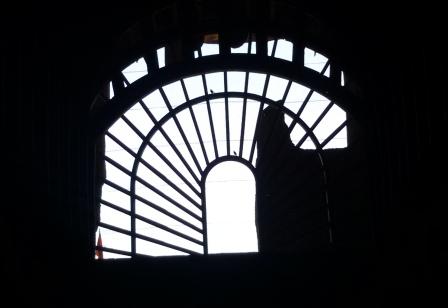
The Chaityagriha
Whenever one enters into the huge hall of the Chaityagriha, one is struck by the size & a sublime aura of the shrine. This Chaityagriha (shrine) is the largest of its kind in India. It measures approximately 38 m in length, 14 m in width & 14 m in height. It is really huge, & any visitor will feel own insignificance standing inside this hall with high roofs fitted with arched wooden ribs. The huge Stupa, symbolizing Lord Buddha, is at the distal end of the massive hall.
The hall is divided into a central area & two aisles on either side by two rows of octagonal pillars. The pillars have a head portion of inverted flowers upon which there are animal & human figures. The pillars situated behind the Stupa are, however, plain without any decorations.
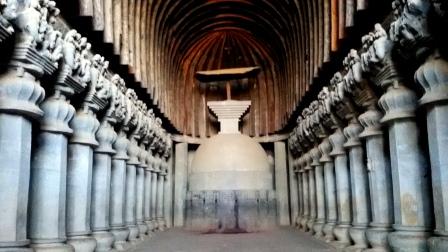
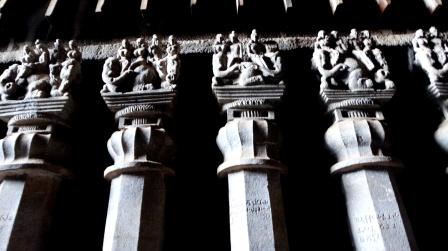
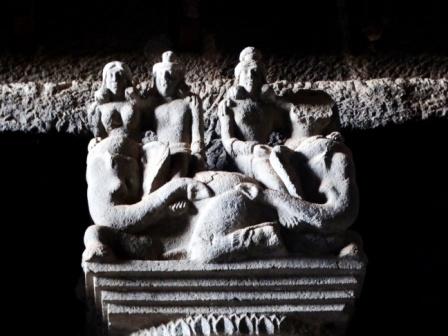
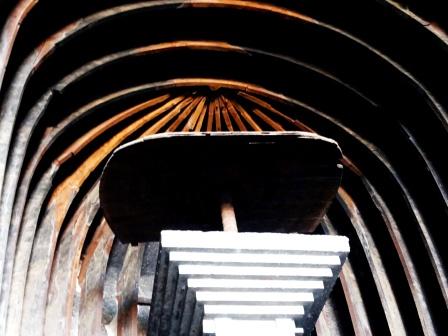
The Stupa
The Stupa is regarded as a symbol of Lord Buddha in the Heenayana sect, & is the object of worship. It starts as a cylindrical drum over which there is the hemispherical top, upon which is a seven-stepped inverted pyramid. At the top of the structure is a wooden Chhatri (umbrella).
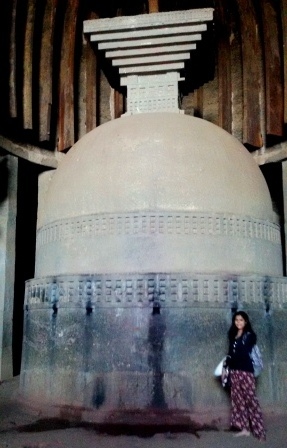
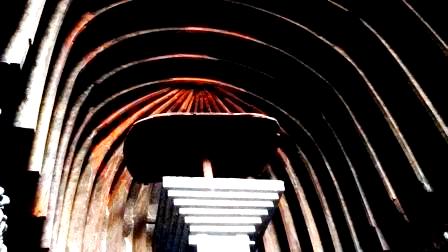
Other caves
Beside the awesome Chaityagriha, there are other caves of various dimensions, but mostly small & plain without decorations. The austere environment clearly indicates the hard life led by the Buddhist monks living there.
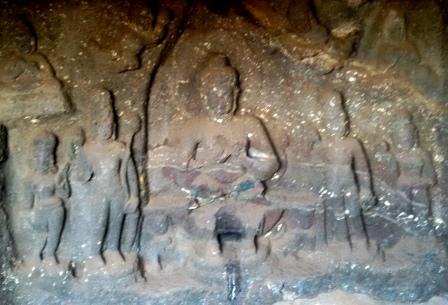
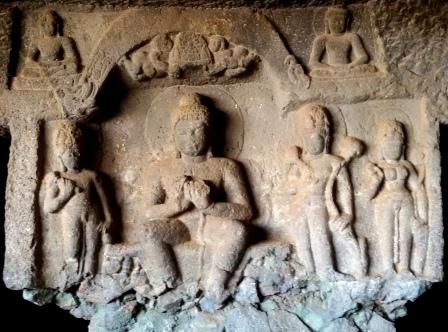
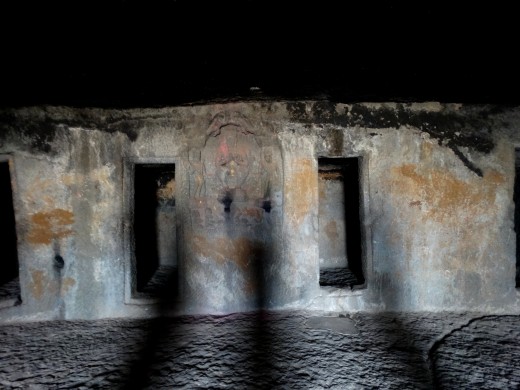
Ekbira temple
A new addition to this ancient Buddhist structure is the temple dedicated to the Hindu goddess Ekbira, considered a form of Goddess Durga. It is situated in front of the Chaityagriha on one side. A large number of people visit this temple daily, & the rush during Hindu festivals is considerable.
Apparently, almost all the visitors here come mainly to worship Goddess Ekbira, visiting the ancient shrine is a secondary affair.
The path to the caves is lined by shops selling materials needed for performing the Puja (worship) of the Goddess.
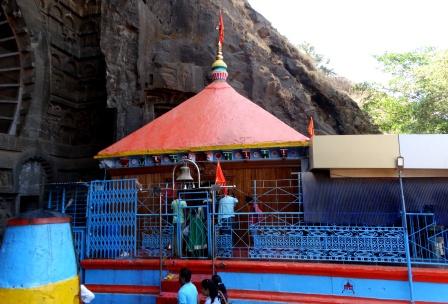
How to reach
There are auto rickshaws & cars available at the Lonavala Railway station which is an important station in the Mumbai-Pune route. The caves are about 12 km from Lonavala station. Karla is about 60 km from Pune, & 85 km from Mumbai, approachable from either city by train or road. Vehicles can go up to a certain level beyond which there are about 250 steps to climb. For those who are incapable of walking the steps, Doli-s (palanquin) are available.
Conclusion
Standing near the caves any sensitive visitor feels an eerie, if not magical, feeling. Just close your eyes & try to visualize the scene here 2000 years ago. Serene & calm, the shrines reverberating with chants of “Buddhang Sharanang Gachchaami ….” & the yellow-robed monks silently doing their daily chores … it’s like a time travel.
A visit to Karla is a memorable one.

